We had the opportunity for the older girls to work on their reading skills through MaxScholar, an online reading program. We received a full 12-month subscription so we could try out their Reading Intervention Programs. Honestly, at first I wasn't sure if this program was something we would need, as it is meant to help children with dyslexia, learning disabilities, ADHD, processing problems, and others who are struggling with learning to read. None of these categories fit my children. However, when I realized they could work on language skills and reading comprehension, I figured it might just be helpful for preparing the girls for their standardized tests. Tabitha had these past several weeks to work on skills before having to take her 5th grade test, while Amelia will get a chance to utilize a full twelve months of being on the program before she is required to take her 5th grade test next spring.
There are the 3 main programs: MaxPhonics, MaxWords, and MaxReading. And there are several additional programs: MaxMusic, MaxVocab, MaxPlaces, and MaxBios. These reading intervention programs are multisensory and use various research based methods, such as the Orton-Gillingham approach and the Lindamood-Bell Process. The programs are accessible on a computer or on a tablet, and it is recommended to use Google Chrome. In the parent/teacher resource section, there are also materials that can be printed out, so you would want to have a printer. However, I haven't found the need to print anything out as of yet, but having looked at the resources, I plan on using them in the future. Though I was disappointed to see that quite a few of the files are .doc files, which we can't open as we don't have Word.
When we were given access to MaxScholar, accounts were created for both myself (as the parent/teacher) and the girls (as my students). There was a little snafu at first and the accounts weren't linked. However, they were able to get that fixed right away.
Here is a look at my dashboard:
From here I can keep track of how my children are performing through the "Reports" section, view the list of students in my class and edit their settings, review the licensing information, access those "Materials" I mentioned above and change my password.
And here is a look at Tabitha's dashboard:
From here she has access to all the available programs. The main three do require an assessment/placement test to be taken first.
MaxPhonics is the one program I figured the children wouldn't need to use, as they have both known how to read for years, and we use a phonics based program. MaxPhonics focuses on letters, blends, and digraphs with practice in both forming and pronouncing the sounds. Honestly, it sounds like a great foundational program for learning to read. I did have the girls take the assessment just to make sure I hadn't overlooked something, but they both aced the test, so we moved on.
MaxReading teaches effective reading comprehension strategies, so this was one I knew I wanted to focus on, especially with Amelia. One of my huge reasons for homeschooling our younger children was because of the struggles my older children had in public school when it came to reading comprehension, which translated to problems in all subjects that require the student to read to understand. Which is most of them. It was important to me that it states that MaxReading uses strategies that will help with focus, visualization, and retention, while making sure the child is fully comprehending what they are reading. There are 13 levels, each of which have multi-chapter books. After reading a passage the child will highlight the topic, main idea, and important details and then answer questions. They will also get to practice outlining and summarizing what they read.
MaxWords was actually the program the girls spent the most time in. I know how important it is for the children to build their vocabulary, and this section has multiple ways to do just that. They get to work on syllabication, spelling rules, prefixes and suffixes, plus Latin and Greek roots. Amelia struggled with the assessment a bit and ended up being placed in the first section on syllabication called CLOVER,which I wasn't surprised to discover, as she has always struggled with syllables. Though she placed in CLOVER and chose to focus on working on syllables, she can still access the other modules.
Tabitha did quite well on her assessment, placing in Latin Roots. We decided she should still work in the other modules, which she did, starting in CLOVER. She has worked her way to working with Prefixes and Suffixes.
MaxMusic allows a child to work on reading skills by reading lyrics to songs by popular artists and completing challenges. This is actually a section we will be avoiding due to the secular nature of the songs.
MaxVocab helps a child improve their vocabulary through the dictionary containing all the words in the MaxScholar books. Children can search for the different words, read the definitions and sentences containing those words. They can also play games such as Hangman, Definitions, and Word Search.
MaxPlaces allows a child to work on reading comprehension. The child will choose one of 51 locations from around the world to read about, then they can use their highlighters as they do in MaxReading to note details, then they are to answer reading comprehension questions.
MaxBios also allows a child to work on reading comprehension. In this section the child will choose to read about famous personalities from the following categories:
- Entertainment
- Fascinating Men
- Old School Musicians
- Hip-Hop Artists
- Amazing Women
- Business and
- Star Athletes
Each category has a decent sized list of people to read about. The child will again use their highlighting skills and answer reading comprehension questions.
Let's look a little closer at the sections the girls chose to work in.
MaxWords
CLOVER is the module where children work on syllabication. Each of the letters in CLOVER stands for a different type of syllable.
Here is what the letters stand for:
- C- Closed Syllables
- L- Consonant - Le
- O- Open Syllables
- V- Vowel Teams
- E- Vowel - Consonant - E
- R- R - Controlled Syllables
The program will explain the definition of each kind of syllable and then list examples of words which the children are to read. They can click on the words to hear them read to them. Then they will learn the rules for each type of syllable, along with more examples. Then the child is complete some activities, such as choosing the correct syllable division for a list of words. The section concludes with a chance for the child work on their fluency by reading a list of words, seeing how many they can read in one minute.
The girls weren't sure if they needed to read the list once or if they should continue until the timer was actually done. They haven't found a list that they struggled with being able to be finished before the one minute is up, so I just had them continue reading and record how many words they go above and beyond the list. I wish they had a way to stop it to record how much time they had left, or a stopwatch that actually ran up, to see how long it took them to read the words on the list. Because as it is now, they have to let the timer run down to 0 or they aren't considered done with this activity.
The children work their way through the letters in CLOVER. After every two letters there will be a review, followed by a final review after all the letters and reviews have been completed.
In Spelling Rules children are taught 18 different rules through a series of activities.
The child can choose the rule they would like to work on, though Tabitha did work in order. The child starts with the "Listen Up" activity where they hear what the rule is, read an explanation of the rule and then read through a list of words demonstrating the rule. It actually sounds like the computer is supposed to read the explanation as well, but for some reason it cuts off toward the beginning of the sentence.
Then they move on to "Countdown" where they are timed as they are in CLOVER, trying to read as many words as possible in a minute. Next it's "Quiz Time," where the child is to take a short multiple choice quiz.
I will have to say, I was a bit surprised to see a question where the correct answer actually broke the rule. I have not gone through every quiz, but found it a bit disconcerting that this was on the first spelling rule taught. In the screenshot below the correct answer is "this" yet the spelling rule says that the consonants f, l, and s are to be doubled after a short vowel in one-syllable words.
I understand that English is full of words that break the rule. It just seemed a bit weird, and potentially confusing, to include this word while teaching the rule.
Some of the lessons end with the quiz, others have a fourth activity called "Fill in the Blank" where children are to drag the correct letter combination to complete a list of words.
Prefixes & Suffixes teaches children the meaning of different prefixes and suffixes, giving the children activities where they look at the context of a sentence or the meaning of the word to see which prefix/suffix needs to be added. Tabitha is in the middle of this section right now.
Finally, Latin Roots and Greek Roots will allow a child to see how so many of our words in English have their roots in these ancient languages, increasing their vocabulary as they do. They will learn the meaning of each root and see an example before completing a series of activities, such as "Break it Down," "Fill in the Blank," "Move and Match," and "Ultimate Challenge."
MaxReading
In MaxReading the child can choose a "chapter" from the menu.
The program will recommend certain "chapters" from the books in the level the child is working at; however, they can not choose reading selections from higher levels. Though only four chapters are pictured, a child can click on the red-highlighted rectangle to go to the list of books in their level, where a huge selection of chapters are available. In Amelia's current level she can choose from the following books:
- Seasons and Weather
- Creatures
- Picnic Time
- My Neighborhood
- Hobbies
- Places
Unlike a "normal" story book, these chapters are not related to each other except for the fact that they come under the same topic. There are between 9 and 19 different stories in the above books. The following screenshot shows the reading selections found in the "Places" book:
Now, Amelia was not aware that she had these huge lists to choose from. She has been clicking on the recommended stories which appear to be randomly selected, as she has worked on 1 or 2 from each book. I chose this list to screenshot because it shows three different statuses. "Incomplete" appears to mean Amelia clicked on the story and then decided not to do it. Or I guess it can mean a child started working on it and didn't finish. "Start now!" shows that the story has never been started or clicked on. And a letter grade, such as the "A+" shows that the child completed the story and has a grade.
Grades are received through reading the story and completing the activities.
The child can either read the story by themselves or have it read to them by clicking the blue-green speaker icon to the right of the story. Then the child is to highlight the topic, main idea, and important details.
I have to say, it appeared to me that Amelia was highlighting way too many words to count them as "important details." Imagine my surprise when she was quite close to what they were looking for.
This shows her answers compared to the answers they were looking for:
I honestly have yet to figure out how a child is supposed to know what is supposed to be considered an important detail. I don't see any lesson that teaches the child how to determine what to highlight. It seems it is trial and error, working through the program enough and the child will learn which words the program is looking for. I have to say, this is my least favorite aspect about MaxReading.
After working on highlighting and focusing on the details or the story, the child answers several reading comprehension questions.
They are able to go back to the text to find their answers, so it isn't the same as taking a test. Once they finish all the question, they will see their score. If they have a high enough score they will be able to play some games.
There are many opportunities, between MaxReading, MaxBio, and MaxPlaces for children to get practice with improving their reading comprehension.
All in all, I have to say, I am quite impressed with this program. Though not a huge fan of way children have to highlight so much of a story as "important details" I can see that the children are enjoying working on their reading and vocabulary skills. MaxScholar is a wonderful program, not just for those who need reading intervention, but for parents who would like their students to improve their vocabulary and reading skills. I personally can not attest to the MaxPhonics portion of the program; however, it sounds like a great program. I am sure there are plenty of my Crew mates who utilized this section, so don't forget to click on the banner below to see what they had to say about MaxScholar.
Click on the banner below to see what my Crew Mates have to say about MaxScholar

























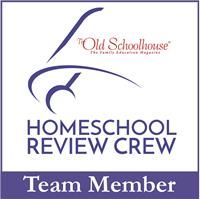
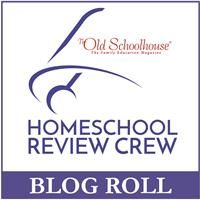













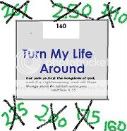
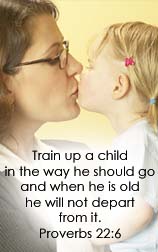



![[PREMIO2009.png]](https://blogger.googleusercontent.com/img/b/R29vZ2xl/AVvXsEjXD_Gx-wZ9EM5hXKrEYLksEBkYfRQtmb8VDVTDG_yyLggQoFIstZsh4zszdG20KqErZicRzEhiNYLty7j3IMXJYsABqkXjr8pp-ncj71xCbpxlXGbGpZq2fTuDQqq1RMKV4DPcDBnBViA/s1600/PREMIO2009.png)
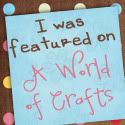
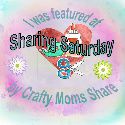


No comments:
Post a Comment
Thank you for visiting my blog today. I love to read your comments, so please leave me one if you have the time.
Blessings